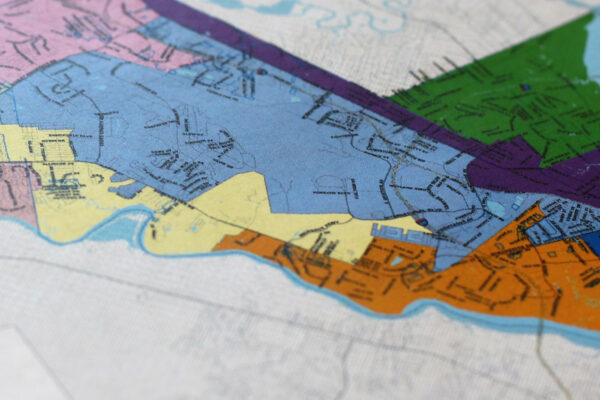Redistricting is the process of drawing the lines of districts from which public officials are elected. When it’s conducted fairly, it accurately reflects population changes and racial diversity, and is used by legislators to equitably allocate representation in Congress and state legislatures. When politicians use redistricting to manipulate the outcome of elections, however, it’s called gerrymandering — a practice that undermines democracy and stifles the voice of voters. Voters should be picking their politicians. Not the other way around.
Sophia Lakin, Deputy Director of the ACLU’s Voting Rights Project, answers some of the most frequently asked questions about redistricting.
What’s the difference between redistricting and gerrymandering?
The process of redistricting is lawful and equitable when it’s conducted properly. It is also frequently a necessary process to reflect changes in population changes and racial diversity after each decennial Census. When redistricting is used as a tool to manipulate electoral outcomes or discriminate against certain groups, it ceases to be lawful and equitable, and we call it gerrymandering.
Why bother with redistricting?
The Constitution and the federal courts require it. It’s also the fair and equitable thing to do. Historically many states did not redistrict to reflect shifts and growth in their populations. In a series of cases in the 1960s, one of which coined the phrase “one person, one vote,” the Supreme Court held that the Fourteenth Amendment guaranteed “equality” of voting power and that the electoral systems in states which failed to allocate voting power on the basis of population were unconstitutional. According to the 2020 Census data, nearly all of this country’s population growth this last decade was due to the growth in communities of color. Redistricting is an opportunity to ensure that our maps reflect that growing diversity.
Who conducts redistricting?
In most states, the state legislature is responsible for drawing district lines. However, 15 states (Alaska, Arizona, Arkansas, California, Colorado, Hawaii, Idaho, Michigan, Missouri, Montana, New Jersey, Ohio, Pennsylvania, Virginia, and Washington) use special redistricting commissions to draw state legislative districts. Six of these states (Arizona, Hawaii, Idaho, Montana, New Jersey, Washington) also use a board or commission to draw congressional plans, while 10 states (Maine, New Mexico, New York, Rhode Island, Utah, Vermont, Connecticut, Illinois, Mississippi, Oklahoma, and Texas) use an advisory or remedial commission in the event the legislature is unable to pass new plans. Iowa is different from all others in that district plans are developed by nonpartisan legislative staff with limited criteria for developing plans.
Is redistricting the same as reapportionment?
Reapportionment refers to the allocation of representatives to previously established voting areas, as when Congress allocates, or “apportions,” seats in the House of Representatives to the several states following the decennial census. So, for example, based on the population changes captured in the 2020 census, the reapportionment process reshuffled the 435 congressional seats among the 50 states such that certain states like Texas gained congressional seats while some states like New York lost seats. Redistricting is the process of redrawing district lines based on population changes and in some cases may have to take into account a loss or gain of a representative after the reapportionment process.
What is vote dilution?
Vote dilution refers to the use of redistricting plans and other voting practices that minimize or cancel out the voting strength of particular voters, often voters of color. While race-based vote dilution is prohibited by the Constitution and the Voting Rights Act, the practice continues to diminish the true political strength of communities of color in particular by fracturing those populations across multiple districts or improperly concentrating them together in a single district. Again, the 2020 census shows that nearly all of the country’s growth over the past decade is attributable to the growth in our nation’s communities of color. Redistricting plans should reflect that reality.
How can we make sure redistricting is conducted fairly?
We all need to be involved in the process. We should stay informed of plans to redraw federal, state, and local district lines; attend meetings where plans are presented and evaluated; contact organizations willing to evaluate proposed plans and offer alternatives; write letters of support or opposition to elected officials and the Department of Justice; and seek needed legal advice. The goal of redistricting is to provide fair and effective representation for all. We can help achieve that goal by actively participating in the redistricting process.

